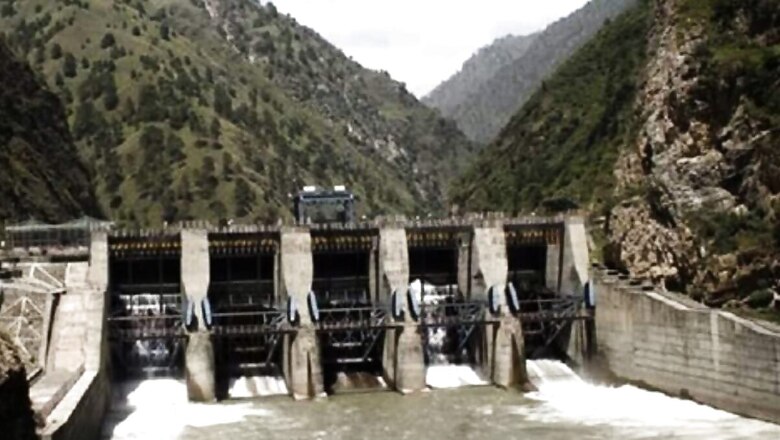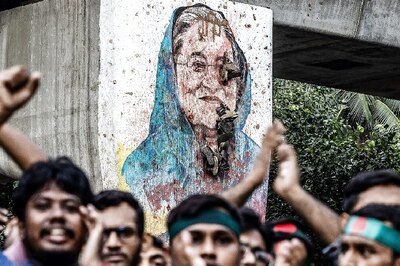
views
With the completion of Shahpur Kandi Barrage on the River Ravi, India has effectively ceased the water flow to Pakistan, which signifies a strategic shift in water allocation from February 25, according to reports. This move would benefit the region of Jammu and Kashmir for agricultural purposes.
How will J&K Benefit from This?
The region would now receive at least 1,150 cusecs of water that was previously allocated to Pakistan. The water is expected to be utilised for irrigation purposes, benefiting over 32,000 hectares of land in the Kathua and Samba districts. The Shahpur Kandi Barrage is a dam on the Ravi River in Pathankot district, Punjab, India.
Through this, Jammu and Kashmir will be able to get 20% of the hydel power generated from dam. Besides, the water will also benefit Punjab and Rajasthan regions.
According to a report by NDTV, the 55.5 metre-high Shahpur Kandi Dam is part of a multi-purpose river valley project that includes two hydel power projects with a total installed capacity of 206 MW. It is built on river Ravi, 11 km downstream of Ranjit Sagar Dam Project.
About the Indus Water Treaty
Under the treaty, signed in 1960 under the World Bank’s supervision between India and Pakistan, a portion of Ravi river’s water flowed into Pakistan via Lakhanpur dam. The treaty’s provisions enable India to set up storage facilities on the western rivers, further enhancing its water management capabilities.
Under the treaty, India has the exclusive rights over the waters of the Ravi, Sutlej, and Beas rivers while Pakistan controls the Indus, Jhelum and Chenab rivers.
Shahpur Kandi Barrage
Former Prime Minister PV Narasimha Rao laid the foundation stone for the Shahpur Kandi Barrage project in 1995 but it was held up for nearly four years due to a domestic dispute between Jammu and Kashmir and Punjab.
In 2008, Shahpur Kandi was declared a national project, but its construction started in 2013. The project was again stalled in 2014 due to the disputes between Punjab and J&K. Finally, the Centre mediated between the two states in 2018, and the work resumed after.
During a rally, Prime Minister Narendra Modi accorded highest priority to Shahpur Kandi Barrage project, and stressed over India’s rightful claim to the waters of Sutlej, Beas and Ravi rivers.
“Had Narendra Modi not become the prime minister in 2014, the Shahpur-Kandi dam project — that was stalled for 70 years — would not have resumed,” Jitendra Singh, the Union Minister of State in the Prime Minister’s Office said at a public meeting at Basohli in Kathua district, which is part of his Udhampur parliamentary constituency.
A task force was also set up to ensure every drop of water from the rivers reaches to the people of Jammu and Kashmir and Punjab.
Around 2 million acre-feet of water from the Ravi river continued to be unutilised to Pakistan below, Madhopur, according to a report by The Economic Times. Water projects such as Bhakra Dam on Sutlej, Pong and Pandoh Dam on Beas and Thein (Ranjit Sagar) on Ravi river along with the Beas-Sutlej link and Indira Gandhi Nahar Project have enabled India to use 95% share of waters from eastern rivers.
The completion of Shahpur Kandi Barrage will help India utilise these water resources, bolstering agricultural and economic growth in both the states.




















Comments
0 comment